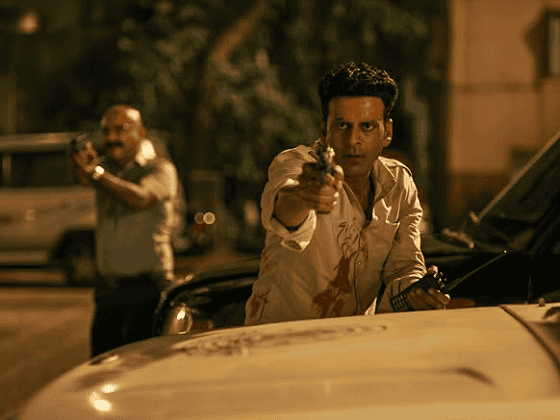Stories, music, dance and other art forms have been timeless sources of creative expression, co-existing with human society since its birth. It’s common knowledge that art is formed from the inspiration of reality and the work is portrayed through the artist’s perception of reality. This influence has led to the birth of many beautiful depictions of art which have been loved thoroughly.
With the world constantly evolving with new inventions, cinema has become the widest form of appreciated media. The ability to provide story-telling, music, visuals, and theatrics all in one source allows it to become a culminated art form. Showcasing multiple genres enables a huge array of talent to be presented on the screen.
Movies have the power to evoke emotions of all types in their viewers and create a sense of perception of how reality should be. This influence can allow people to resonate and sympathize with those different from them, find solace in the situation they are going through, and motivate people out of their misery. However, it may also play a negative role and create a harmful illusion for its audience.
Why is reality glorified?
The simple answer is that no one wants to see the true depiction of life (at least for the majority). Showing the mundane lifestyle of reality is found boring and lacklustre. Therefore, glorifying it with attractive people, flashy editing, and clean and serene settings allow people to find an escape and see something worth the money they paid. Everyone wants to experience memorable trips in ‘Zindagi na milegi dobara’ and ‘Yeh Jawaani Hai Deewani’ but how many people can actually afford it?

The need for escapism plays a huge impact in the way media is created for the audience. Showing movies where the good guy wins, justice prevails, soulmates are found and a happy ending is created, helps the viewer find reassurance in a better world.
With the recent trends, it shows a happy story isn’t enough to keep the viewers satisfied. The rise of the OTT platforms has shown us that dark, action, and thriller media have also found a popular fan base. This can be seen through shows such as ‘Family Man’, ‘Mirzapur’ and ‘Sacred Games’.

High-grossing numbers in these genres, inspire others to write stories on the same ground making more movies in the same light. There’s no arguing that the above examples show intense creativity and have their right to have the popularity they do, but it also forces many writers to box into certain standards.
The ambition of wanting big numbers and immense profit makes it difficult to experiment with different stories. Even if writers were to come up with new, unexplored ideas they soon get shut down by producers as they may not be profitable. This leads to an influx of stories with the same premises and background which over-saturates the entire theme. To make it more attractive, many with resources make the media grander, more capitating to lure in a higher audience.
The line between reality and fiction
Setting the ideal standards for certain experiences may inspire someone to achieve the same. They allow the audience to feel lighter and have a new sense of outlook on life. But this may also cause dissonance between reality and cinema for some audiences.
Movies are known for their over-the-top romanticizing of real life and most rational viewers accept it is all a facade. However, the problem lies when impressionable audiences get influenced by the perfect friendships, relationships, jobs and family shown on screen and begin feeling amiss that reality isn’t the same. This causes people to have overly ambitious goals and makes them easily dejected when things don’t go as smoothly. Taking inspiration from their beloved characters, they begin to forget that the stories are mere fiction.
The issue gets worse when movies end up normalizing or portraying certain situations in the wrong light. One of the biggest examples of this is the normalization of sexual harassment.
Bollywood holds numerous romantic movies which are beloved by all ages alike. Many people grew up watching classic rom-coms and found their first experience of understanding romantic love through them. No matter how swoon-worthy many of these movies are, there have been constant stereotypical methods of how women are treated.
Stalking, physical and sexual abuse, cat-calling and many others are constantly directed towards women in many Bollywood movies. These actions are not viewed as satire in fact, viewed as attractive and desirable to make the female lead fall for the protagonist. ‘Dilwale Dulhania Le Jayenge’, ‘Raanjhanaa’, ‘Toilet: Ek Prem Katha’ and various others show toxic behaviours that are masked by the idea of ‘romantic’. The movies most prevalent with this ideology are ‘Kabir Singh’ and the recent movie ‘Animal’ which glorifies domestic violence making such acts a norm in relationships. Unfortunately, this trope is also found in the Kollywood industry, playing it out in the majority of films.

No matter how fictional these movies are, they play a huge role in influencing children in how romance is perceived. Many young boys start seeing such acts as normal and begin harassment because their idols do the same. This isn’t only limited to men; many young girls accept such behaviours since they have learned to think it is normal.
Such a case had come forward when a seventeen-year-old girl went missing from the village of Nagapattinam. She claimed her stalker had sexually- exploited her and later went on to marry him saying she was influenced by Tamil movies.
Another example was when Sandesh Bagila was accused of stalking in Tasmania and had a restraining order against him, he defended that Bollywood inspired him to do so.
The lack of a women’s perspective in media brings fallbacks on how movies are perceived by audiences. There is a constant male gaze present within Bollywood which ends up making women viewed as objects of desire, creating a norm against demoralizing acts towards them. This has made violence against women more acceptable in society.
Even when movies are made focusing on women-centric problems such as ‘Darlings’ and ‘Thappad’, they end up not being well-received by the masses, giving them less attention. This prevents a strong voice from being present for women and further gives in to the toxic- mentality.
When films such as ‘Piku’, ‘Queen’, ‘Kahani’ and ‘English Vinglish’ have helped show women in an independent society, where they break stereotypical standards. However, only a small proportion of women can actually experience such liberation, as only a small proportion of the population experiences such independence.

There’s no doubt this mentality will take time to heal and bring a new era to cinema. Even with recent strides that have helped us shed light on more roles with women as lead protagonists, it all lies in how the audience interprets its message. There will always be people who become overly fixated on certain themes shown, but it is problematic when creators deliberately exploit such perspectives of the audience.
As societal mindsets shift dynamically so will the trends of which forms of media it produces. Art may be a form of self-expression but it also runs with the mindset of the era it was created in.
Written by Kriti Shetty
Edited by Helee Thaker


